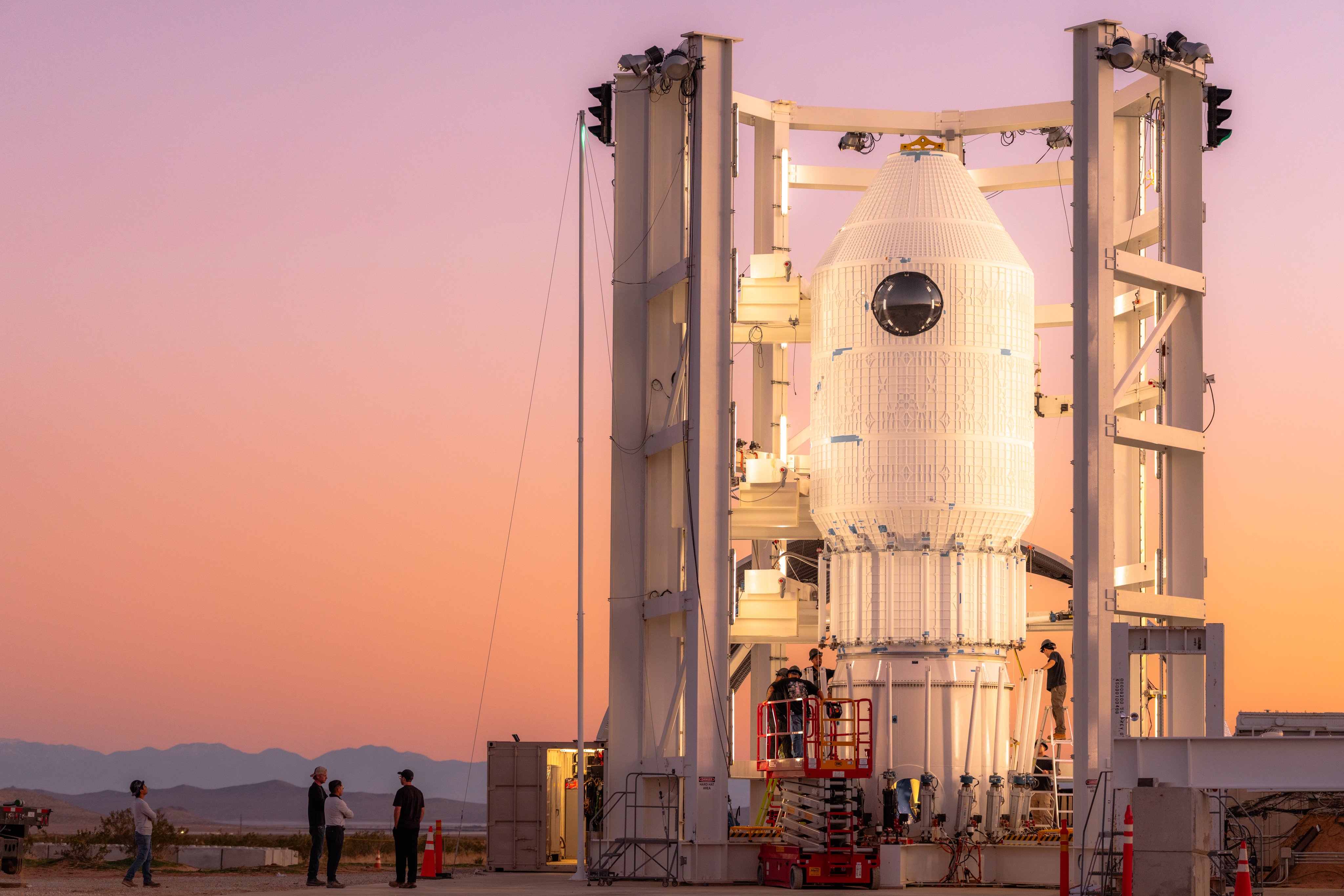The integration tasks still include installing Haven-1’s environmental control and life support elements, power, data, and thermal control systems, thrusters, fuel tanks, and internal crew accommodations. While that work continues on Earth, Vast’s demo mission will validate some of the company’s designs in space.
Flying at an altitude of 300 miles (500 kilometers), Haven Demo will test Vast’s computer, power, software, guidance and control, propulsion, and radio systems. The pathfinder will also provide Vast an opportunity to exercise its ground stations and mission control teams.
Meanwhile, Vast will ship Haven-1 from its California headquarters to NASA’s Neil Armstrong Test Facility in Ohio for a rigorous environmental test campaign. The Haven-1 module, roughly 33 feet (10.1 meters) long and 14 feet (4.4 meters) wide, will undergo acoustics, vibration, and electromagnetic interference testing. Engineers will also place the habitat into a test chamber to check its performance in the extreme temperatures and airless vacuum environment of low-Earth orbit.
Then, Haven-1 will ship to Cape Canaveral, Florida, for final launch preparations. Vast’s official schedule calls for a launch of Haven-1 no earlier than May 2026, but there’s still a lot to do before the spacecraft is ready to travel to the launch site.

The primary structure of Vast’s Haven-1 habitat is seen undergoing structural testing in Mojave, California.
Credit:
Vast
Once in orbit, Haven-1 will host a series of crew visits flying on SpaceX’s Dragon spacecraft, each staying for two weeks before returning to Earth.
Haven-1 has a habitable volume of about 1,600 cubic feet (45 cubic meters), somewhat smaller than one of the primary modules on the International Space Station, but five times more than SpaceX’s Dragon capsule. Vast’s longer-term roadmap includes a larger multi-module space station called Haven-2 to support larger crews and longer expeditions in the 2030s.
Vast’s demo mission is an initial step toward these goals. The satellite now circling the planet carries several systems that are “architecturally similar” to Haven-1, according to Vast. For example, Haven-1 will have 12 solar arrays, each identical to the single array on Haven Demo. The pathfinder mission uses a subset of Haven-1’s propulsion system, but with identical thrusters, valves, and tanks.
Source link

